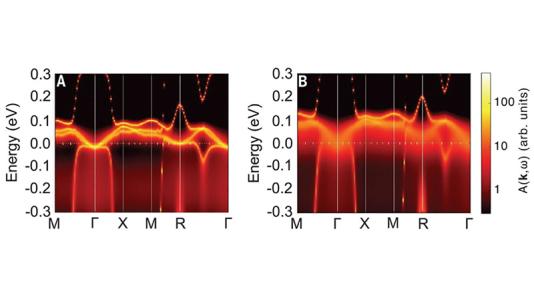
Scientific Achievement
Inelastic neutron scattering validate the ab initio theory of the crossover from incoherent to coherent electronic excitations as a function of temperature.
Significance and Impact
This coherence crossover is fundamental to many strongly correlated electron systems and is now comprehensively understood using the latest advances in experiment and theory.
Research Details
- Neutron scattering measurements of full volumes of 4D S(Q,ω) were performed on Angular-Range Chopper Spectrometer (SNS) and Merlin (ISIS).
- There is excellent agreement on an absolute intensity scale between measurements and ab initio calculations.
- The magnetic response is modulated by the joint density-of-states of f-electron quasiparticles, strongly enhanced by local particle-hole interactions.
Argonne National Laboratory seeks solutions to pressing national problems in science and technology. The nation’s first national laboratory, Argonne conducts leading-edge basic and applied scientific research in virtually every scientific discipline. Argonne researchers work closely with researchers from hundreds of companies, universities, and federal, state and municipal agencies to help them solve their specific problems, advance America’s scientific leadership and prepare the nation for a better future. With employees from more than 60 nations, Argonne is managed by UChicago Argonne, LLC for the U.S. Department of Energy’s Office of Science.
The U.S. Department of Energy’s Office of Science is the single largest supporter of basic research in the physical sciences in the United States and is working to address some of the most pressing challenges of our time. For more information, visit https://energy.gov/science.